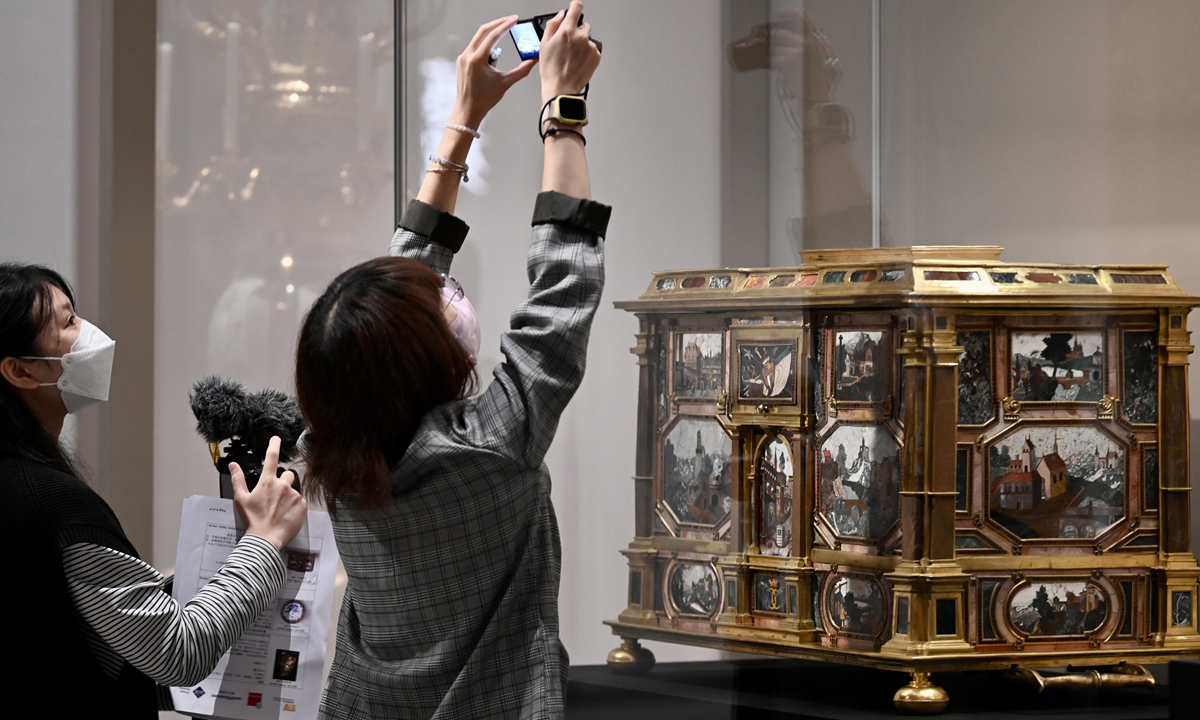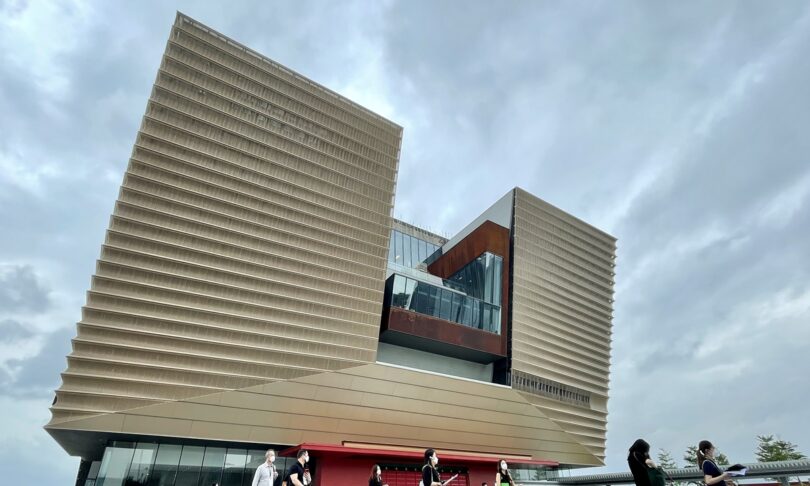Wu Jie
Eight groups of artifacts featuring Chinese dragons are on display to greet the Year of the Dragon at the Hong Kong Palace Museum (HKPM) in the Hong Kong Special Administrative Region (HKSAR).
The exhibition features a variety of items including ceramics and calligraphy. The collections, which were offered by the Palace Museum in Beijing, span the Ming (1368-1644) and Qing (1644-1911) dynasties.
Louis Ng, director of the HKPM, said that in Chinese culture, the dragon symbolizes supreme authority. Through the exhibition of these artifacts from the Beijing Palace Museum, it is hoped that the public can gain a profound insight into the depth of Chinese culture.
“This year, we are honored to showcase a series of collections related to the Year of the Dragon, including ceramics, clothing, handicrafts, calligraphy and paintings – all intricately connected to the traditional Chinese cultural symbol of the dragon,” said Ng.
One of the notable collections is a large square-shaped seal from the Qing Dynasty. The jade seal symbolizes the supreme authority of the emperor.
In the same vein, over 50 objects including jades, oracle bones and stone carvings will be on display at the Art Museum of the Chinese University of Hong Kong (CUHK) from February 2 to July 31 to mark the Year of the Dragon.
Some of the highlights of the exhibition include a Western Han Dynasty (206BC-AD25) turquoise seal that inspired the art museum’s emblem, a ring-shaped white jade box with a dragon design from the Five Dynasties (907-960) to the Northern Song dynasty (960-1127), as well as a dragon brush-holder created by the legendary ceramic designer Tang Ying (1682-1756). Tang worked as superintendent of the imperial porcelain kiln in Jingdezhen, East China’s Jiangxi Province, for over two decades.
Visitors taking photo at the Hong Kong Palace Museum (HKPM) Photos: ICTong Yu, associate researcher of the CUHK art museum, said that dragon has a history of nearly 8,000 years in China. The well-known image of the dragon, however, has not remained consistent throughout the ages. As documented in historical records, it is ever-changing and elusive.
This exhibition takes the motif of the dragon found in ancient Chinese artifacts as a guide to explore the evolution of its presence, including the formation of its design and the changes in its styles, according to Tong.
To mark the year of this powerful creature which garners immense admiration from Chinese people, the CUHK’s exhibition is dedicated to exploring the iconography of the dragon in ancient Chinese art against the socio-cultural contexts of different times, according to the art museum.
Meanwhile, Ng said that since its opening in 2022, the museum has welcomed over 2 million visitors.
In 2023 alone, the museum received 1.25 million visitors, over 60 percent of whom came from the Chinese mainland and overseas. Ng hopes that in the future, both international visitors and those from the Chinese mainland will regularly visit the site.
Courtesy: globaltimes







